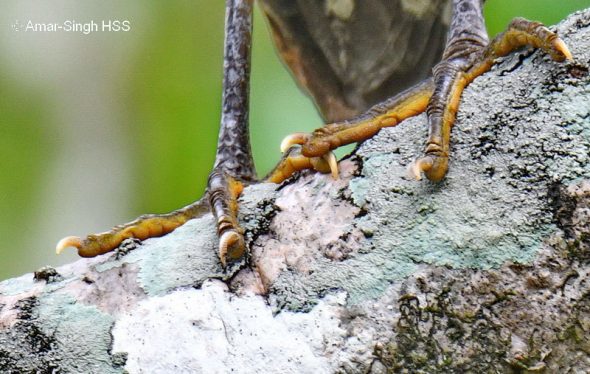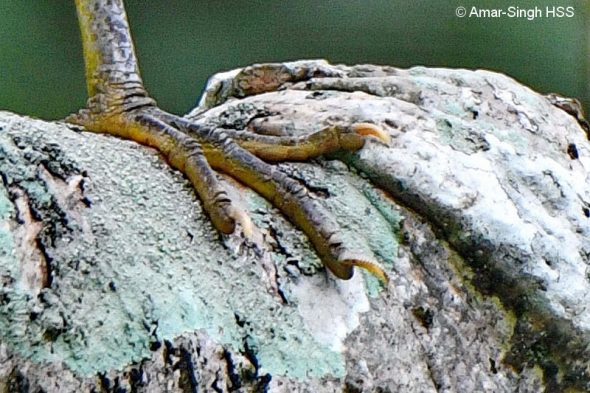
I became aware of pectinate claws in birds after close observation of the Large-tailed Nightjar (Caprimulgus macrurus bimaculatus) that lives in our home. The most comprehensive account is by Clayton 2010 (Clayton, et al. “How Birds Combat Ectoparasites.” The Open Ornithology Journal 3: 41–71). The article describes that a review of 118 bird families found that only 17 possessed pectinate claws; these included some species of nightjars, owls, pratincoles, terns, grebes, herons, egrets, bitterns and cormorants. Clayton 2010 also notes that there is within-species variation of pectinate claws and some individuals have the claw, while others lack it.

I have been on the lookout for the feature in many birds but they are not easy to image. I spotted it in the Malayan Night Heron (Gorsachius melanolophus melanolophus) I was observing recently. I am unsure if it is present in all Malayan Night Herons. I am not able to find any literature describing pectinate claws in this species. Herons have four toes; three are directed forwards and one backwards. The comb-like (pectinate) claw is usually located in the middle claw of forward-directed toes. There has been much speculation as to its function and an assumption has been made by many that it is used in bird feather maintenance (preening) or ectoparasite control. But there is no evidence of this role as yet (some evidence to the contrary by Clayton 2010). My prolonged observations of the Large-tailed Nightjar also do not support these roles of this specialised claw.
Amar-Singh HSS (Dato’ Dr)
Ipoh, Perak, Malaysia
Habitat: Secondary growth at city fringe
Date: 12th April 2019
Equipment: Nikon D500 SLR with Tamron SP 150-600mm f/5-6.3 Di VC USD, handheld with Rode VideoMic Pro Plus Shotgun Microphone








